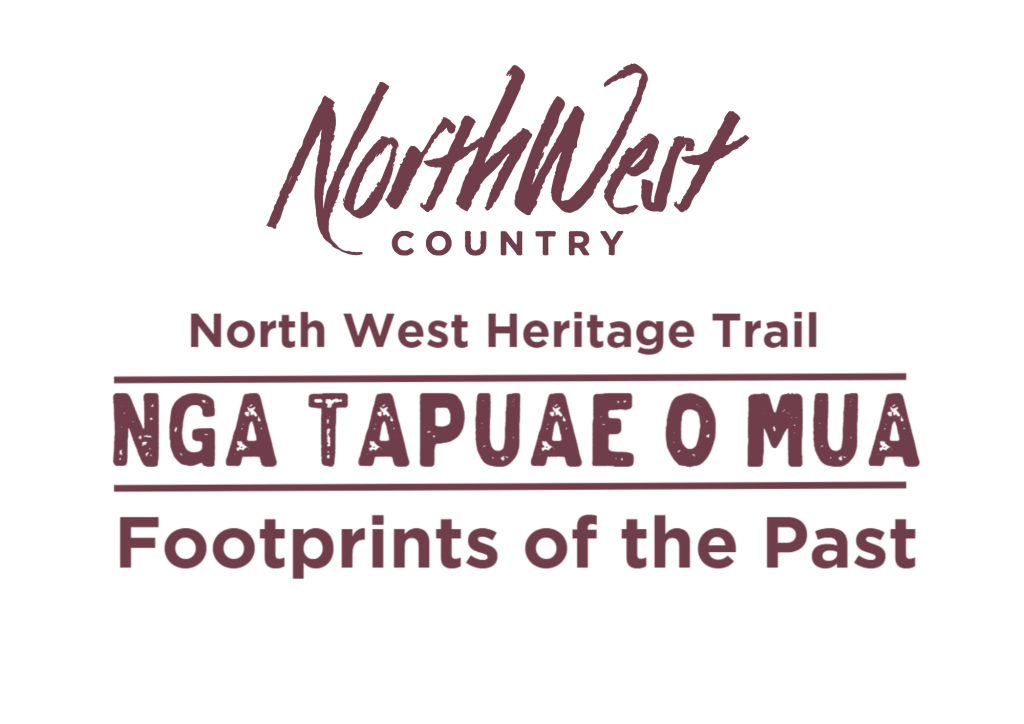
KO TE MIRA KANI RĀKAU
No te tope rākau o te iwi Māori, ka topengia ngā rākau mō taua kaupapa, i waihongia ai te nuinga o ngā rākau, kia tupu tonu. I te haere mai a ngā tāngata Pākehā ki te tope kauri, i topengia ngā kauri katoa, nā rātou te wao nui i whakarekereke. I takahurihuritia te koiora o ngā tāngata katoa, i a tukuna puta noa ngā rākau ki te ao whānui. Kore he utu mō taua tope rākau ki ngā Māori, he utu noa iho ki a rātou, hei kaimahi mā ngā kai tūporo.
THE MILLING INDUSTRY
Māori felled trees only when needed and the future of the kauri was ensured. Europeans felled almost purely for profit. Timber was sent all over the world. Mills cropped up all over the land and it was changed forever. The Kaipara Harbour and its rivers made the transport of huge kauri logs manageable. Very few Māori made any profit from timber, other than from jobs in the forests or the mills.
The Milling Industry – Mira Kani Rākau
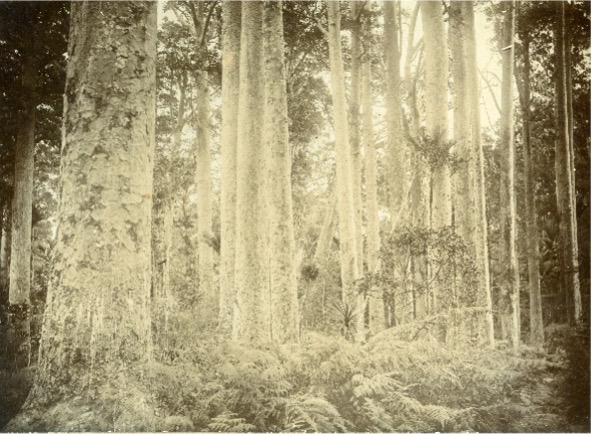
Kauri Forest – courtesy of Helensville Museum
New Zealand kauri (Agathis Australis) is one of the largest and longest-living trees in the world. It belongs to the ancient conifer family, Araucariaceae. Before people settled here, the most southern-growing species, NZ kauri, covered much of the Coromandel Peninsula and northern areas.
When Māori came they saw these giants of the forest as having chiefly status and in the North, kauri held the highest rank. This is reflected in sayings such as “Kua hinga te kauri o te wao nui a Tāne” (the kauri has fallen in the large forest of Tāne) – which is often heard in whaikōrero (speeches) whenever a person of great importance dies.
Although revered, kauri was considered less useful than other trees such as tōtara and miro, which not only provided superior timber for buildings and carving, but produced berries that attracted birds, an important source of food. Kauri gum was valued more highly than the wood – it could be used as a fire starter, for medicinal purposes, and the soot from burnt gum was used as a tattooing pigment. The straight-grained, buoyant timber was, however, ideal for waka (canoes).

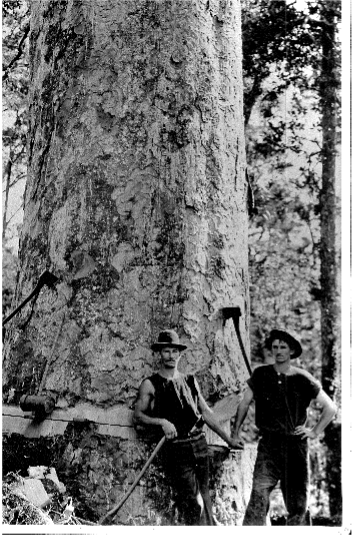
Tudor Collins photo – Felling Kauri – courtesy of Helensville Museum
The qualities of kauri timber impressed the first Europeans who visited northern Aotearoa (New Zealand) from the late 1700’s. By the mid-1820’s, timber merchants, pit-sawyers and shipbuilders were setting up shore stations throughout the northern region. Māori traded kauri spars and provisions for European goods, and later for muskets.
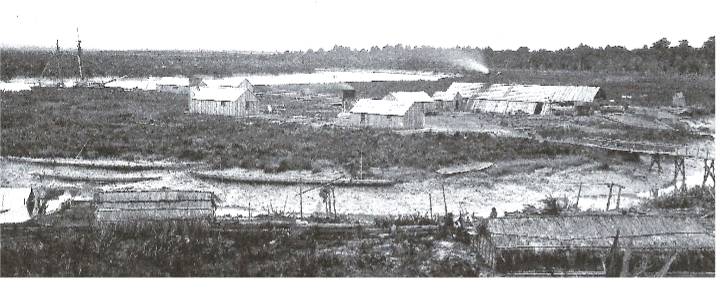
McLeod’s Mill – photographer Daniel de Beere – courtesy Helensville Museum
When European settlement picked up pace after 1840, there was also a growing need for sawn timber for construction. By the mid 1860’s, sawmills were springing up along the many harbours and waterways of the kauri region and Te Awaroa (Helensville) was no exception. John McLeod opened the first timber mill after moving to Te Awaroa in 1862. It stood roughly where the Grand Hotel is today, although this only operated for a few years due to a slump in the market. When trade later improved other mills came into their own, including the Helensville Timber Company, in which John’s brother Isaac was involved.
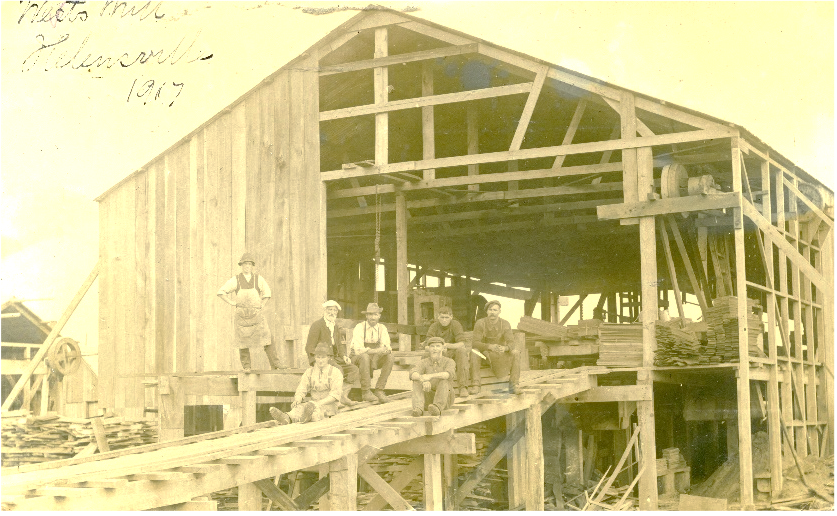
West’s Mill 1917 – courtesy of Helensville Museum
A later venture was the Kauri Timber Company, set up by the “Melbourne Syndicate” who were a group of Australian and New Zealand businessmen. The West Brothers came to Te Awaroa (Helensville) in 1884 and set up a factory making furniture and wood turning. They then moved further north to Hoteo to farm and run a mill on the Hoteo River. In 1917, Charles West (son of the first owner) returned to Te Awaroa (Helensville) and built a mill at the North End, which ran until the 1975.
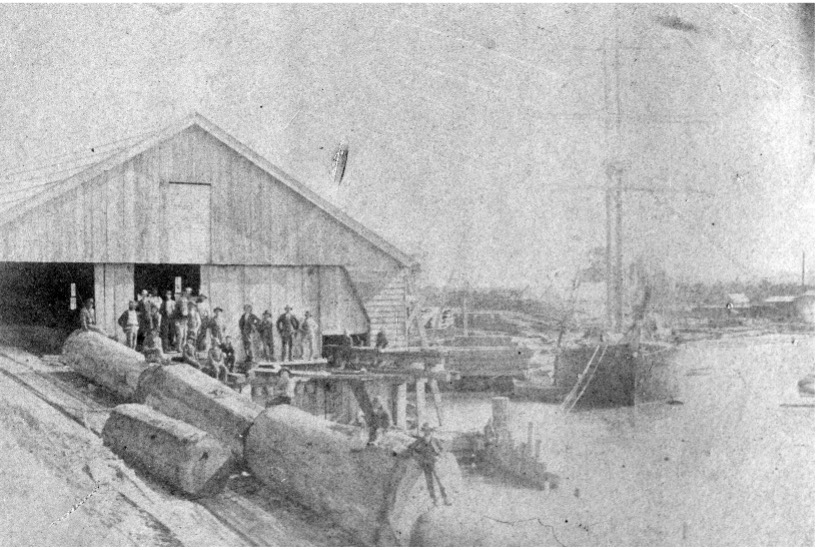
Helensville Timber Company mill – courtesy of Helensville Museum
In just over 100 years, logging and burning transformed the northern landscape from forest to farmland. By the early 1900’s, most kauri forest had been logged. Although there was a growing concern for the survival of the remaining native forest, the high value of kauri timber meant that the forest was still exploited. A final push to extract the last of the kauri swept through the north in the 1920’s and 1930’s, reducing the forest to the few patches that survive today.
Further reading in Papers Past:
Sawn Timber for sale 17-8-1865 (scroll to bottom of the article)
Largest and Longest Log 24-2-1882 (scroll to half way)
Conflict of Interest 23-11-1889
People & Their Stories…
Charles Staniland West
Charles West lived in the Te Awaroa (Helensville) district from 1884, arriving with his family from the Midland Counties in England. Early on, with a passion for the sea, he owned a dinghy, then a launch and later on a small steamer. He had explored all the branches of the harbour.
In 1917, he opened a sawmill which operated near the south railway station, the site offering good access to rail, water and the main road. Kauri was by this time mostly cut out and Kahikatea (white pine) from John P Hand’s farm and trees from the Hoteo and Araparera area were the mainstay of the business.
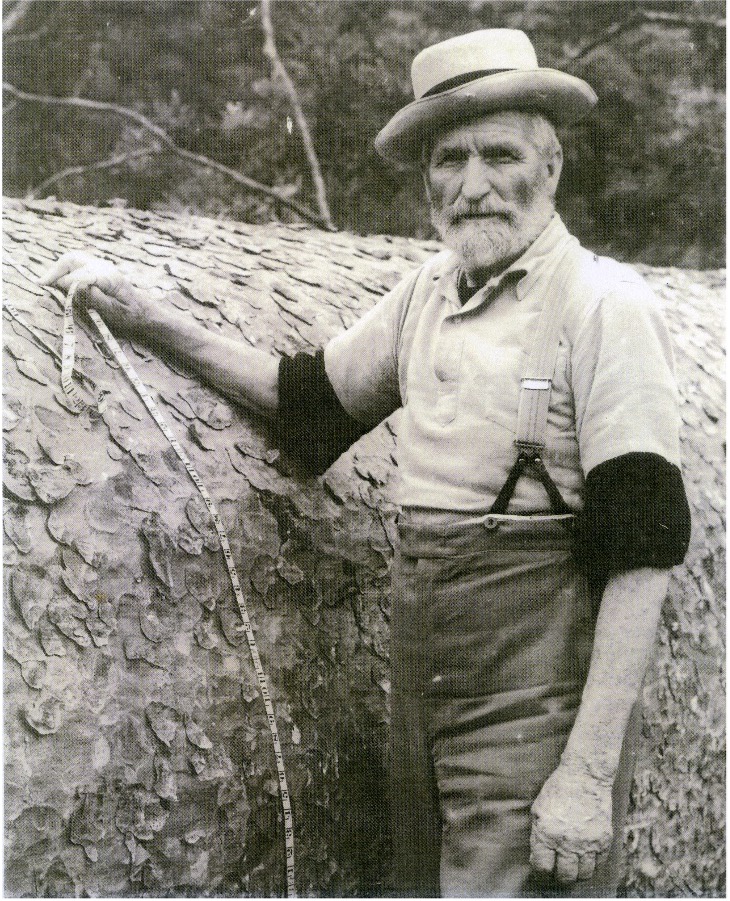
By 1921, Wests’ Mill had begun the manufacture of Kahikatea fruit and butter boxes, which was combined with the continued cutting of timber. The Kaipara Co-op Dairy Factory and butter factories as distant as Kaitaia were supplied with boxes from West’s and the fruit boxes, first sent to Port Albert, later went as far abroad as the Pacific Islands. From 1922 West’s steamer, TSS The Minerva, undertook all rafting for the mill and made trips all over the harbour. The most difficult part of any Kaipara harbour rafting was the crossing between North Head and South Head with the vessel and trailing logs exposed to the winds and the five-knot current which flowed in and out of the harbour entrance. The Minerva safely towed some large schools of logs through these troubled waters.
Soon after the establishment of the business Charles realised that the supply of indigenous timber within reach was rapidly diminishing, so he purchased a 300-acre block at Unahirere (Mt. Rex). Here he planted Pinus Radiata but also some Eucalypts up until the 1930s when economic conditions became unfavourable. In 1941, a block at Whakatiwai was purchased and supplied much of the timber until the mill closed in 1975.

